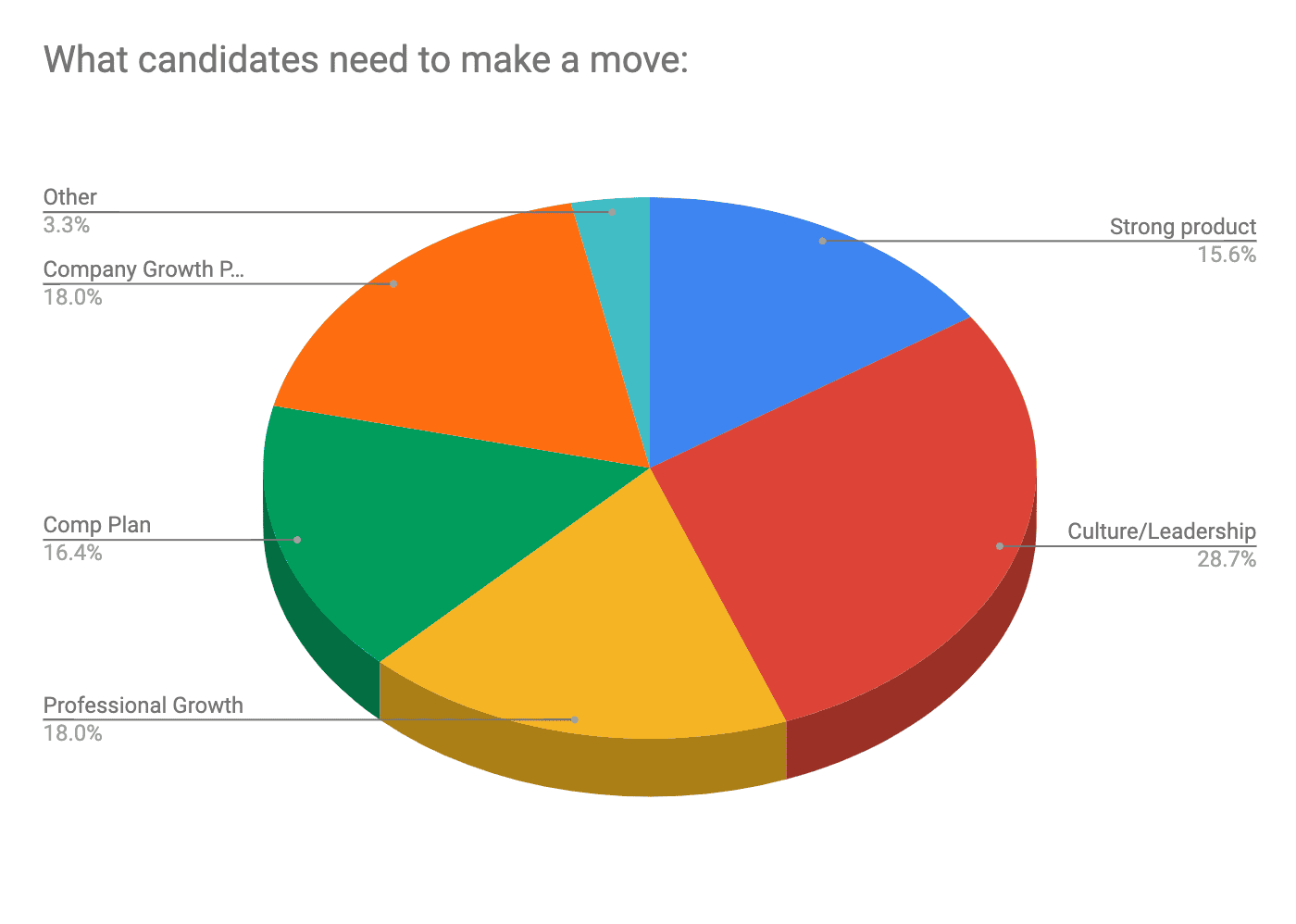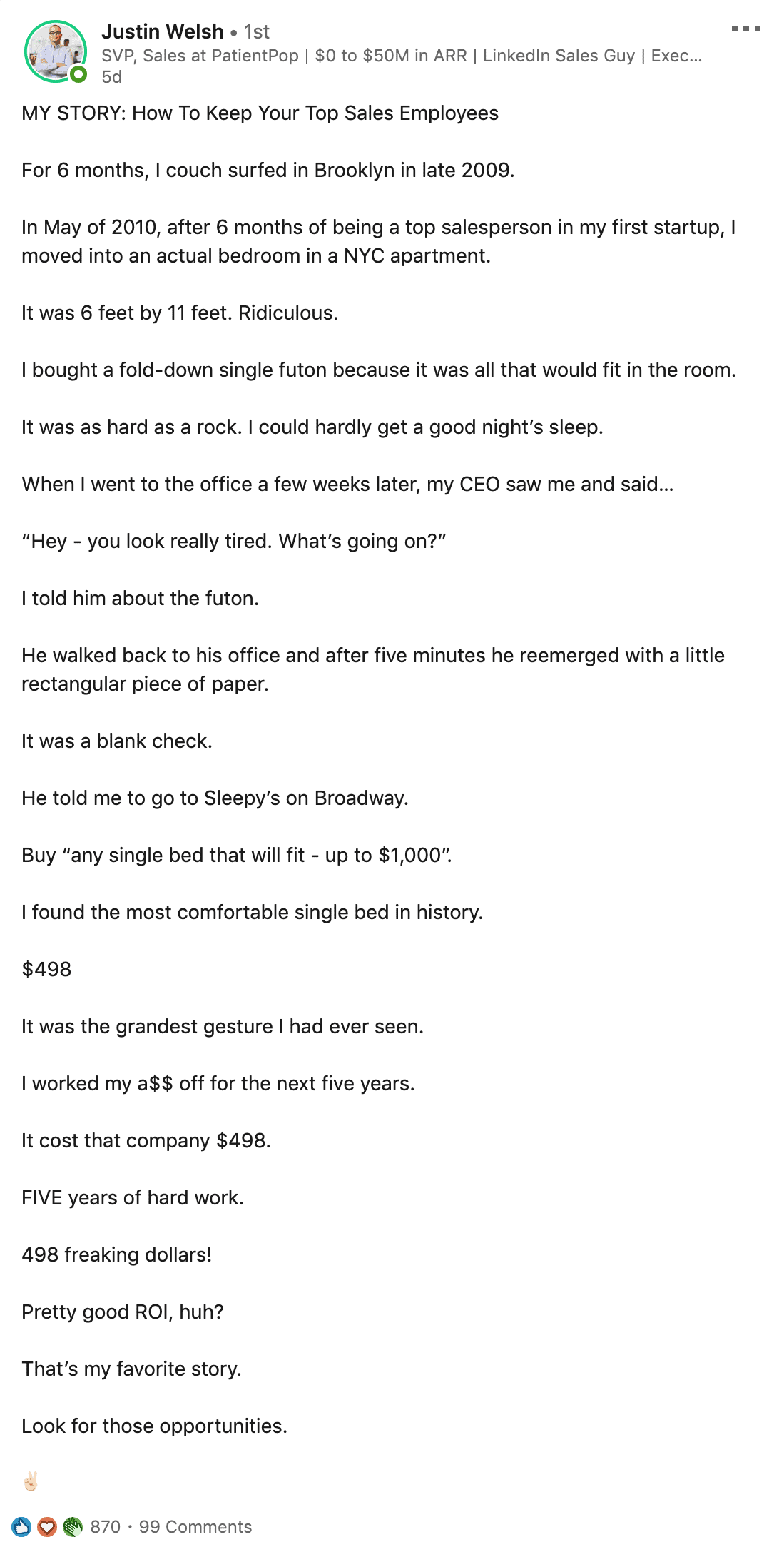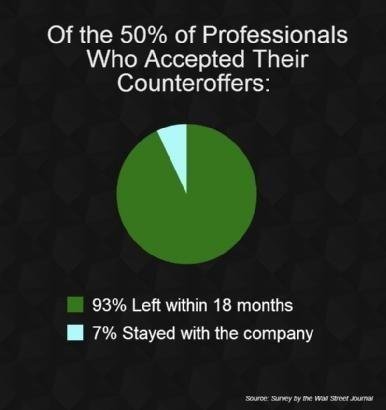
Employee turnover is skyrocketing. This data explains how to stop the bleeding.
Data from the Bureau of Labor is showing that employees are now quitting their jobs at the highest rate in a decade across all industries:

The national turnover rate (via the Bureau of Labor Statistics)
This is a huge concern to CEO’s globally, given PWC estimates that costs can reach up to 40% of a firm’s earnings – with sales turnover estimated at up to 5x the person’s salary.
That means each salesperson who leaves you is a very expensive problem.
But here’s the real kicker… recruiting replacements is harder than it has ever been.
For the first time since data has been collected by the Department of Labor, there are more job openings (4.7%) than unemployed people to fill them (3.6%)!
That’s why as a startup (actually, any business), it’s more important than ever to retain your best people.
Take it from someone who has spent 20+ years in the sales trenches… as Q3 starts, your team is already thinking about how they will finish the year and where they will be in 2020.
Here’s why turnover is so high (statistically) … and which data-backed retention strategies actually keep your best employees with you.
5 data-driven retention strategies for retaining your best employees.
We’ve been collecting data here at ATP for the last 3+ years on what salespeople care about most regarding the startup they work for.
Here’s what we’re seeing at all levels, from CRO to AE:

Most candidates we talk to value culture and leadership over everything else.
What this data says to me is that the old adage “people don’t leave companies… they leave bosses” is truer than ever.
Which means it’s on us to be the leaders our teams want and need to excel.
The good news is, 75% of the reasons our people would leave us are within our control as leaders (according to Gallup).
Here are the top 5 strategies you as a leader can implement right now in order to retain your best salespeople for next year.
Make each person feel important.
According to OfficeTeam, 66% of workers are likely to leave their job if they feel unappreciated.
This is not a surprise – everyone wants to feel like they matter!
And all it takes to do that is showing how much you care about them as a person… it doesn’t even have to be work-related:

That’s how you create die-hard loyalty!
Take an interest in what’s going on in their world: ask questions, listen to what they say, what they’re struggling with, and then act on it (this last part is the critical one).
Spend less time in front of your spreadsheets and dashboards and more time with your team.
Something as simple as this will go a long way to make your team feel like they matter and make your workplace feel like a collaborative one.
Show them their impact.
Another facet of feeling important is knowing that what you’re doing means something to the task at hand.
In fact, research by Harvard Business School found that “employees with highly meaningful jobs were 69% less likely to plan on quitting their jobs within the next 6 months.”
The way they found to do that? Letting them see that they’re making a difference.
In sales, this has always meant the following to me:
-
Seeing feedback from a customer turn into improvements in the product
-
Having a voice internally to take data collected from the front lines to continue to get better together
-
Celebrating the wins, losses, and anything in between as a group
-
Having leadership that will block and tackle for me internally to enable my efforts
-
Breaking apart problems and real customer scenarios together versus splintering off and working in vacuums
-
Being comfortable to talk to anyone in the company from the CEO to the customer service rep because the culture of nobody being better than the other is fostered from the top down
Sometimes the little things go a long way to making you feel like what you do matters!
Get better at hiring.
In 2014, Netflix found that their top retention strategy was simply to ensure their own colleagues were excellent.
Simply put, toxic employees are a major cause of turnover – failing to terminate a toxic employee can make others 54% more likely to quit.
So even if they are your top performer, they are doing more damage than helping you in the long run.
The solution is to get better at hiring the right people for your team (as well as managing out those that are causing the problems).
I’ve teamed up with Sales Hacker to tackle how to get your sales hires right in detail (use that link for more on this topic).
Create room for your people to grow.
As we’ve seen with our own data here at ATP, having a place where you can progress professionally is huge for top performers.
This can mean a lot of things for a lot of salespeople. But within the data we’ve collected, there are 2 primary ways that people want to see the potential for growth professionally:
-
The ability to make an impact on the business – top performers know that their results and achievements are some of the most valuable things they have. So it’s important that they have the ability to create those with you!
-
Upward mobility (including compensation) – A+ salespeople want opportunities to move up in an organization, both in terms of being compensated for their work monetarily and also with opportunities to move into leadership.
Creating these things is not a one and done static task. It’s a continuous process of finding new ways to incentivize your best people and keep them growing!
Minimize barriers to productivity.
Our jobs as leaders is first and foremost to enable our people to theirs to the best of their ability. And when they don’t feel like you are, they leave.
Great example – a client I was in the middle of negotiations with recently resigned on the spot because his CEO wouldn’t accept our contract.
He was referred to us because they were suffering from the effects of mishiring enterprise salespeople and it was hurting their ability to meet the board #.
He confirmed that the way we work was exactly what he was missing and what their business needed. Something he knew it because he had built multiple successful sales teams over the course of 20 years.
But rather than trusting and enabling this person to do their job well, the CEO (who was a first time CEO with zero sales background) refused to get out of the weeds.
And the whole business is suffering as a result… with a phenomenal sales leader walking right out the door.
Which areas are the biggest productivity blockers?
That will depend on your business and on your sales organization. But this 2019 study from TinyPulse has some clues of where to start assessing your own processes:

Again, the most important thing you can do as a leader is to spend time with your team on the sales floor asking questions.
Find out where they’re stuck and create a solution. They will definitely appreciate it!
Two common employee retention strategies that aren’t effective.
Ironically, these are the strategies that most companies turn to first to keep their best people. Here’s why they aren’t the best approach.
1. Exit Interviews
Interestingly enough, standard exit interviews often provide misleading causes of turnover.
Most employees don’t want to be honest with you about why they are leaving because they want a good reference. So they have an incentive to blame it on something like pay that easy to brush off.
In fact, delaying the exit interview up to 2 weeks after the person has left results in a 40% change in the answers to exit interview questions.
So while exit interviews are good practice for improvement, they’re not always accurate unless they are done at the right time.
And most importantly, it’s what you do with that priceless information to get better (and to illustrate to the rest of the team still standing that you care).
2. The Counter Offer
This is probably the most common practice for businesses when a talented person leaves them. But the hard truth is, counter offers don’t work.
This image says it all:

This is because, despite the fact that counter offers are one of the most common retention strategies, only 22% of employees mention money as their reason for leaving (according to a Gallup survey).
My experience (and ATP’s data) are in alignment with this. The problem is rarely money!
Furthermore, think of this like dating… relationships where you “break up to make up ” tend to NOT last the test of time.
The resignation process is no different.
Final thoughts.
The key takeaway here is that your leadership is more crucial than ever given today’s landscape. The better you enable your team with the things above, the more likely they are to stick around, saving you countless dollars on recruiting and lost productivity.
Take this to heart and your best people will fall on their sword for you!
